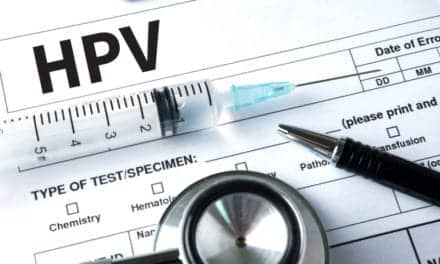Guidelines on diagnostic testing issued by the United States Preventive Services Task Force (USPSTF) have often been the subject of criticism from healthcare stakeholders that have found fault with the group’s recommendations. Critics have included corporate stakeholders as well as patient support organizations—and sometimes both.
But in the middle of August, USPSTF issued an update to its recommendations on screening for cervical cancer that is already meeting with widespread approval. The updated guidelines replace the group’s recommendations from 2012, and for the first time support access to testing for high-risk strains of human papilloma virus (hrHPV) as the first-line screening test to detect cervical cancer and precancer.1
In its analysis of current studies, “the USPSTF found convincing evidence that screening with cervical cytology alone, primary testing for high-risk HPV types (hrHPV testing) alone, or in combination at the same time (cotesting) can detect high-grade precancerous cervical lesions and cervical cancer.” Summarizing its new recommendations, the group wrote:
The USPSTF recommends screening for cervical cancer every 3 years with cervical cytology alone in women aged 21 to 29 years.For women aged 30 to 65 years, the USPSTF recommends screening every 3 years with cervical cytology alone, every 5 years with high-risk human papillomavirus (hrHPV) testing alone, or every 5 years with hrHPV testing in combination with cytology (cotesting).
Comparing the new recommendations to previous USPSTF guidelines, the group further commented:
The major change in the current recommendation is that the USPSTF now recommends screening every 5 years with hrHPV testing alone as an alternative to screening every 3 years with cytology alone among women aged 30 to 65 years. These are the two preferred screening strategies based on the USPSTF review of trial, cohort, and modeling results. Cotesting as an alternative strategy has demonstrated similar effectiveness, although it may result in more tests and procedures compared with either cytology or hrHPV testing alone.
With a bow to the recommendations favored by their own product lines, manufacturers of HPV tests were quick to weigh in with their support of the new recommendations.
“Using HPV DNA testing as the primary screening test and utilizing the Pap test to triage women who are positive for HPV enables healthcare providers to utilize the two tests in their most appropriate roles to achieve the best cancer prevention strategy,” said Alan Wright, MD, MPH, chief medical officer at Roche Diagnostics, Indianapolis. “By using the more sensitive test—HPV—for first-line screening, caregivers can safely send home women who test negative for high-risk HPV. We’re glad to see the USPSTF incorporate the latest science to help healthcare professionals provide the best care for patients and advance the effort to prevent cervical cancer.”2
“We believe all women deserve access to the best healthcare strategies for monitoring and preserving their health and well-being,” said Steve MacMillan, chairman, president, and CEO of Hologic, Marlborough, Mass. “The A grade recommendation for Pap+HPV Together ensures that women will continue to have access to the most commonly used cervical cancer screening method in the United States, an approach that we believe is simple, highly accurate, and cost-effective.”3
With testing recommendations that are viewed as being well-aligned with current scientific and clinical research, healthcare stakeholders have reason to encourage practice changes as quickly as possible. Payors will play a vital role in making sure that the recommendations do not run afoul of obstacles to coverage and reimbursement, and they should work diligently to ensure that the path to adoption is cleared for all of their providers.
References
- Screening for cervical cancer: US Preventive Services Task Force recommendation statement. JAMA.2018;320(7):674–686; doi: 10.1001/jama.2018.10897.
- New cervical cancer screening guidelines recommend HPV testing alone [press release, online]. Indianapolis: Roche Diagnostics, 2018. Available at: https://usdiagnostics.roche.com/en/document/mc-us-01355-roche-statement-uspstf-cxca-screening-guidelines-2018-08-21.pdf. Accessed August 21, 2018.
- Final USPSTF cervical cancer screening recommendations retain ‘A’ grade for Pap + HPV for women ages 30 to 65 [press release, online]. Marlborough, Mass: Hologic, 2018. Available at: https://investors.hologic.com/2018-08-21-final-uspstf-cervical-cancer-screening-recommendations-retain-a-grade-for-pap-hpv-for-women-ages-30-to-65. Accessed August 21, 2018.
Steve Halasey
Chief Editor, CLP
[email protected]
(626) 219-0199







